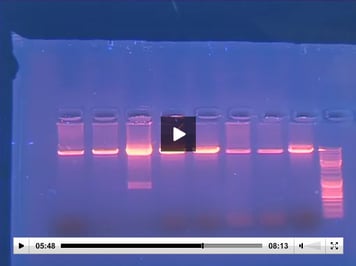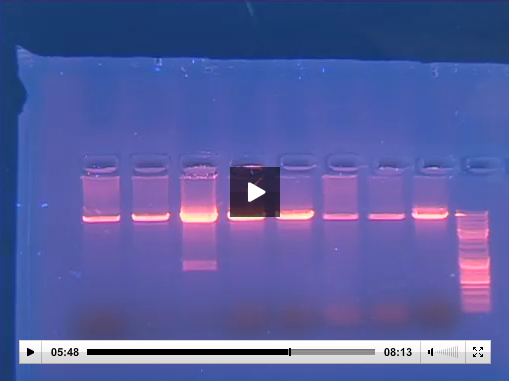Thank you for checking out our “30 days of Science Education” series. Use Science Education videos to introduce undergraduates to the lab.
Plasmids are circular, extra chromosomal DNA molecules, and in molecular biology they act as carriers, or vectors, for a specific DNA fragment. When bacteria are used to replicate plasmids the DNA fragment is also mass-produced.
 There are a number of ways to verify the purity of plasmids after purification. An agarose gel analysis (shown here) of the purified plasmid can determine if the plasmid is the correct size and there are no contaminants. This step ensures there is no genomic DNA contamination and the plasmid was not modified in bacteria.
There are a number of ways to verify the purity of plasmids after purification. An agarose gel analysis (shown here) of the purified plasmid can determine if the plasmid is the correct size and there are no contaminants. This step ensures there is no genomic DNA contamination and the plasmid was not modified in bacteria.
The process by which researchers obtain plasmids from bacteria is called plasmid purification. We discuss the basic principles behind this method, its step by step description, and a handful of applications of this process in this Science Education video taken from our Basic Methods in Cellular and Molecular Biology collection.
Join us as we promote Science Education through our DNA Gel photo contest! You could win $50 and be featured on the blog.
To enter, simply send us a photo of your DNA Gel (like the one in the above image) or a picture of yourself running a gel to phil.meagher@jove.com by December 1, 2014. Come December, we'll pick a winner.

